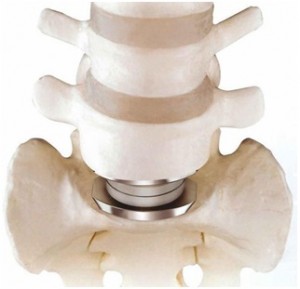Patients who suffer from disc pain symptoms often go in for artificial disc replacement after proper medical consultation, and the disc pain causes that bring about these bulging disc symptoms can vary.
Disc Pain Symptoms and the Reasons Behind Them
Degenerative disc disease is one of the main problems that can throw up disc pain symptoms and disc pain diagnosis might indicate a need for artificial disc replacement.
Degenerative Disc Disease
Spinal discs are soft discs that separate the bones in the vertebrae. Degenerative disc disease is a term used to describe the changes in the spinal disc that normally occur as a part of the aging process. While this process is normal, and mostly causes no ill effects, sometimes it can cause pain and other complications.

The Causes Behind Degenerative Disc Disease
Slipped discs, herniated discs, and degenerative disc disease are all loosely interchangeable terms used to describe the pain caused by a damaged disc in the vertebrae. These discs act as cushions or shock absorbers, softening the impact caused on the spine by any strenuous activity or a fall.
But, over the years, the elasticity and cushioning effects of these discs might be damaged and they may also get split or ruptured or pushed out. This can cause the disc cartilage and adjacent tissue to tear, causing the inner gel to leak through and place pressure on the spinal cord or a nerve, bring about disc pain symptoms.
Slipped Disc or Herniated Disc Causes
- Low water content in the discs as people age can result in the loss of cushioning and elasticity in such discs
- Wear and tear caused by routine activities and sports can bring about disc pain symptoms
- Injury from improper lifting of weights or any injury to the spinal region can cause disc pain symptoms
- Strain caused by sudden twisting or turning motion and excessive strain caused by strenuous physical activities can play a major role
The Types of Disc Disorders
Cervical Disc Disorder
Cervical disk disorder is neck pain caused by damage to the vertebral discs in the neck region. In cervical disc disorder, the discs become worn out, damaged and cease to provide the cushioning effect. The space between the vertebrae is narrowed, and this can result in pressure on nerve roots.
Lumbar Disc Disorder
Lumbar is the vertebrae in the lower back region. Injury or strain caused by a twisting motion can cause this kind of disc damage, but a disorder like this is more commonly caused due to the natural ageing process.
Thoracic Disc Degeneration
This is extremely uncommon. The thoracic region lies along the mid vertebrae region or upper back. Generally, it is the neck and lower back regions that get most affected during such a disorder.
Disc pain symptoms that are commonly experienced during these different disorders include:
-
Severe back pain
-
Feeling of discomfort while remaining in sitting position for long
-
Changing position frequently helps relieve pain.
-
Pain down the back of each leg
-
Numbness and tingling in the affected region
-
Pain with strenuous movement
-
Neck and arm pain
-
Stiffness of the neck
Degenerative disc disorders manifest themselves in different ways and such a disorder might result in lower back pain or neck pain, or neck stiffness, a general discomfort in the spinal region, reduced flexibility and strength of the vertebral structure. If this condition gets severe, artificial disc replacement surgery might be the best option that can be taken up to counter the disc pain symptoms.